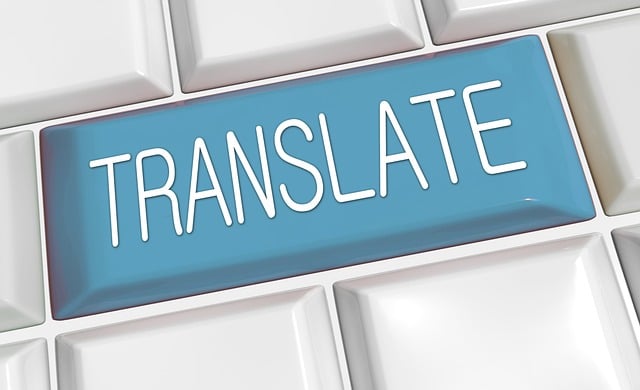Cultural nuances are vital for accurate translation, as they shape word meanings and reception. Idioms, proverbs, norms, and value systems vary across languages, impacting context and interpretation. Effective translators adapt content for global audiences by going beyond literal translations. Online courses teach navigating diverse cultural landscapes, ensuring translated text resonates worldwide. Understanding target audiences, contextual references, and local contexts is key to precise translation, especially in medical settings and content localization. Human expertise is crucial for translating idioms and phrasal verbs, which rely heavily on cultural context. Immersing translators in the target culture helps avoid misinterpretations and preserves subtle meanings.
Context plays a pivotal role in translation, shaping choices that go beyond mere word-for-word substitutions. Effective translators navigate cultural nuances, language dynamics, and target audience preferences to convey meaning accurately. Understanding idioms, phrasal verbs, and localizing sensitivity is crucial for avoiding misinterpretations. This article explores these aspects, providing insights into how context guides translation choices and enhances communication across languages.
- Cultural Nuances Shaping Translation Choices
- Language Dynamics in Contextual Interpretation
- Target Audience: An Integral Consideration
- Idioms and Phrasal Verbs: Literal vs. Free Translation
- Localizing Sensitivity: Avoiding Misinterpretation
Cultural Nuances Shaping Translation Choices

Cultural nuances play a pivotal role in shaping translation choices, making them more than just word-for-word substitutions. Every language carries unique cultural baggage, from idioms and proverbs to social norms and values. A phrase that flows naturally in one culture might be nonsensical or even offensive in another. For instance, the concept of time can be expressed very differently across cultures; what’s considered punctuality in one place may equate to being late in another.
Understanding these nuances is crucial for effective translation, especially when adapting content for global audiences. Online courses on translation often emphasize this aspect, teaching translators to go beyond literal interpretation and embrace the art of cultural adaptation. This involves not just replacing words but also ensuring the translated text resonates with readers from diverse backgrounds. Visit us at culture-bound terminology anytime to explore more about navigating these intricate cultural landscapes in translation.
Language Dynamics in Contextual Interpretation

Context plays a pivotal role in shaping the dynamic nature of language interpretation and translation. When translating, understanding the cultural, social, and historical context is essential to convey meaning accurately. Each language carries unique nuances and idiomatic expressions, and these elements can significantly impact the final translated text. For instance, what might seem like a straightforward phrase in one language could have multiple, very different interpretations in another due to cultural references or idioms.
In the realm of translation exams, proficiency in recognizing and navigating these contextual challenges is paramount. Monolingual memory, while crucial for accurate recall, must be adapted to fit the target language’s complex sentence structure and semantic considerations. The art of translation lies in bridging these linguistic gaps, ensuring that ideas and messages transcend languages with precision and cultural sensitivity. Give us a call at adaptation in translation term precision to explore more about how context guides translators in their craft.
Target Audience: An Integral Consideration

When translating content, understanding your target audience is an integral consideration that shapes translation choices. The audience’s cultural background, language proficiency, and familiarity with the original content all play significant roles in how information should be conveyed. For instance, using specialized jargon in a technical manual might be appropriate for a group of experts but could be confusing for general readers. Therefore, translators must adapt their style to suit the audience, ensuring accessibility and comprehension.
In multilingual environments, such as medical settings, where precise communication is paramount, specialized jargon translation becomes crucial. Medical interpreters or captioning services can facilitate effective communication between healthcare providers and patients who speak different languages. By considering the audience’s linguistic and cultural needs, translators can create accurate and meaningful content, giving us a call at Translation Techniques for expert guidance in these complex scenarios.
Idioms and Phrasal Verbs: Literal vs. Free Translation

In the realm of translation, idioms and phrasal verbs present unique challenges due to their highly contextual nature. A literal translation might not convey the intended meaning effectively, as these expressions often depend on cultural nuances and shared experiences. For instance, a common English idiom like “It’s raining cats and dogs” has no direct equivalent in many languages, requiring translators to choose an alternative expression that captures the intensity of the rain while maintaining naturalness.
When dealing with idiomatic language, translation software and automated translations may struggle. They often rely on word-for-word correspondence, leading to awkward or inaccurate renditions. Successful translation involves understanding the cultural context and finding suitable equivalents—a task that requires human expertise and cultural sensitivity. Effective client communication is key here; translators must clarify any ambiguities or nuances with the client and ensure the final localized content aligns with their expectations. Moreover, film localization and other forms of content localizing demand a deep appreciation for cultural differences to avoid losing the original essence, especially when it comes to idioms and phrasal verbs. Find us at translation validation services to explore how we navigate these contextual intricacies in our work.
Localizing Sensitivity: Avoiding Misinterpretation

When translating texts, understanding the local context is paramount to avoid misinterpretation and ensure the message aligns with cultural nuances. Each language carries its own set of idioms, proverbs, and metaphors that hold specific meanings within their respective communities. Translators must be adept at navigating these differences to preserve the intended sentiment. For instance, a phrase that seems straightforward in one language might have multiple, often unrelated, interpretations in another due to cultural or historical perspectives.
This is where local customs knowledge becomes invaluable. By immersing themselves in the target culture, translators can grasp the subtle shades of meaning that words convey and avoid translating word-for-word, which could lead to confusion. They must also be cautious with culture-bound terminology, ensuring it’s appropriately adapted or explained to readers from different backgrounds. For example, give us a call at Local Customs Knowledge for expert guidance on these delicate matters, as understanding the social context is key to effective translation.
Context plays an indispensable role in translation, influencing choices from cultural nuances to target audience considerations. Understanding language dynamics and localizing sensitivity are paramount to avoid misinterpretations. By balancing literal and free translations, translators can effectively convey meaning while capturing the essence of the original text. These strategies ensure that the translated content resonates with its intended audience, bridging cultural gaps and enhancing communication across languages.
